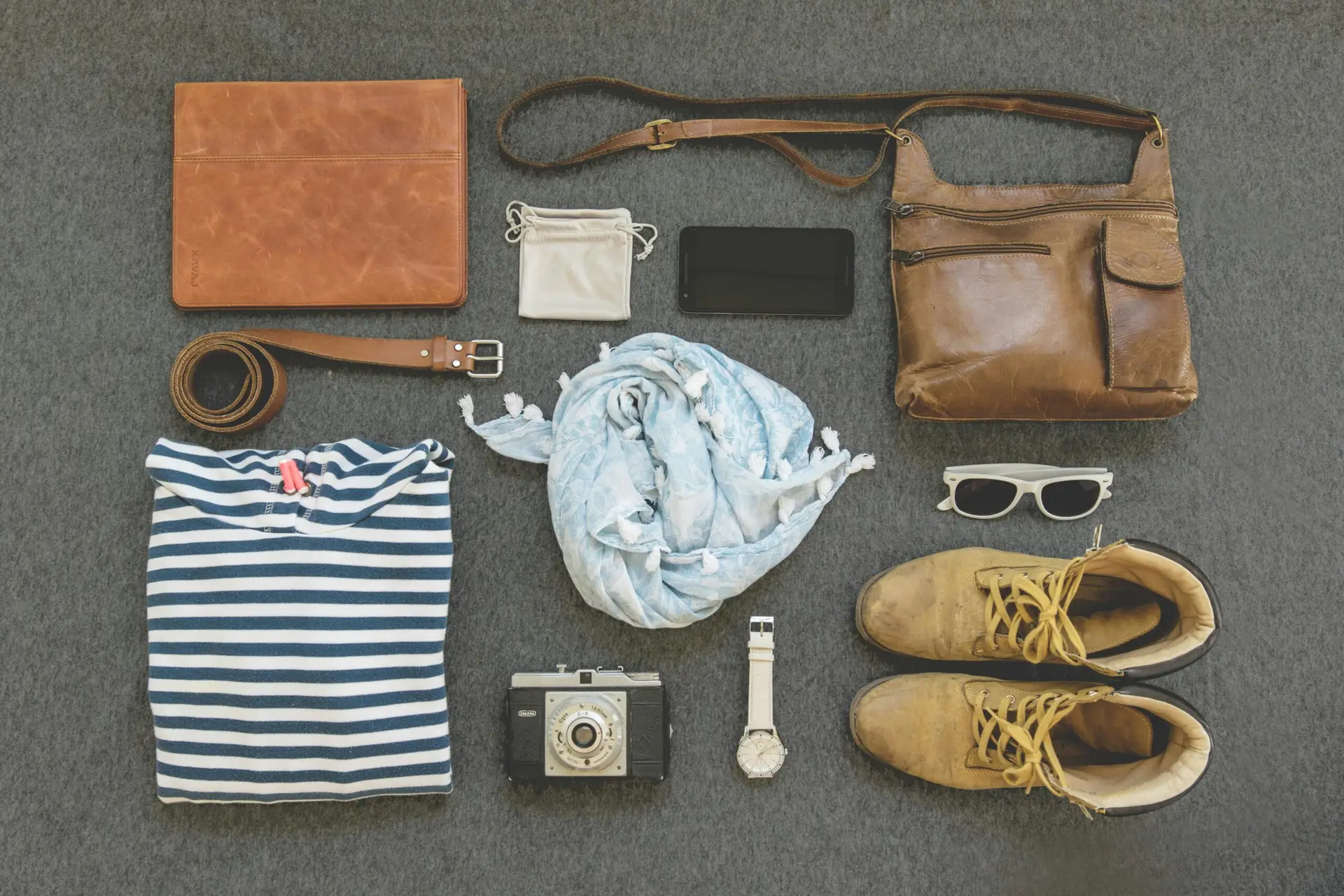What you choose to wear on a safari can make all the difference in your comfort, safety, and overall experience. From breathable fabrics to the perfect safari outfit, your clothing should help you blend in with nature while keeping you protected.
So, what should you wear on a safari to ensure you’re ready for the adventure of a lifetime?
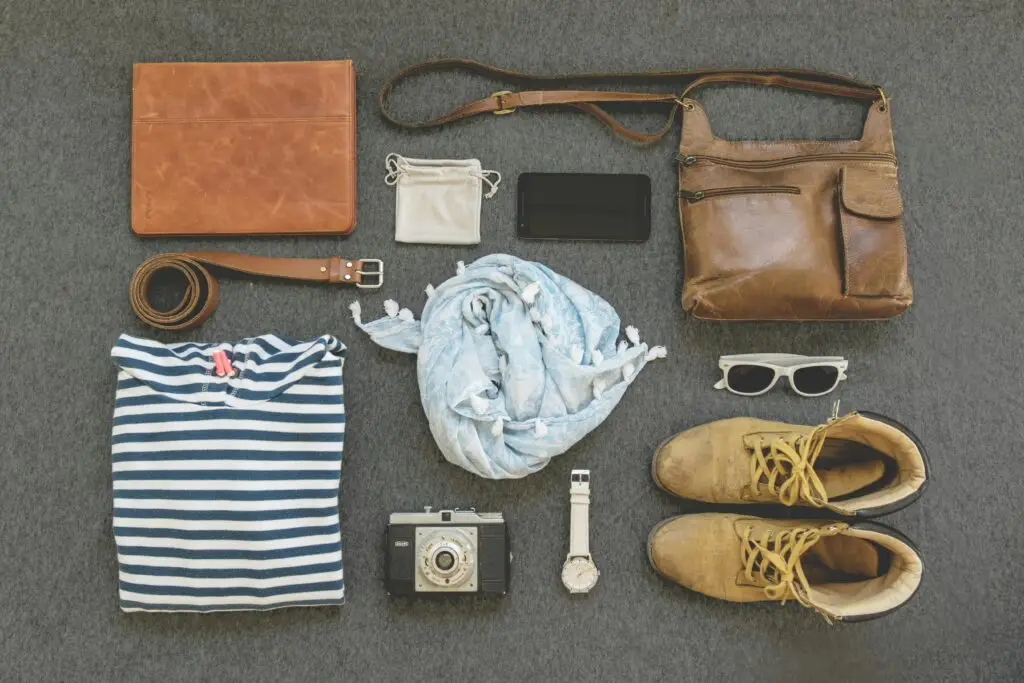
Clothing Colors and Patterns:
- Opt for Neutral Tones: Greens, browns, and khakis help you blend into the environment and avoid startling wildlife.
- Avoid Bright Colors and Busy Patterns: These can draw attention and may scare off animals.
- Steer Clear of Camouflage: Some African countries reserve camouflage patterns for military personnel.
- Avoid Dark Colors: Dark blue and black attract Tsetse flies, which have painful bites.
Choosing the Right Safari Clothing
- Lightweight, Breathable Fabrics: Opt for fabrics like cotton, linen, or moisture-wicking materials. These fabrics keep you cool and comfortable in warm climates.
- Sun and Insect Protection: Long-sleeved shirts and pants are key for protecting your skin from the sun and harmful insects.
- Convertible Pants and Layering: Choose convertible pants that can be zipped off to become shorts, which helps adjust to temperature changes. Layering your clothing also ensures comfort when temperatures vary throughout the day.
What to Wear on Safari Evenings
As the sun sets and the temperature begins to drop, evenings on safari can bring a cool, refreshing change to the day’s heat. To stay comfortable and prepared for the shift in weather, here’s a guide on what to wear for safari evenings:
Cooler Temperatures –Layering Essentials
Even if the day has been warm, temperatures can dip considerably as the evening sets in, especially in more elevated or desert regions. Layering is the key to staying comfortable during these cooler hours. Here’s how to prepare:
- Start with Light Layers: Begin with a breathable base layer like a lightweight t-shirt or long-sleeve shirt. This will keep you comfortable if it’s still a little warm at the start of the evening.
- Add a Layer for Warmth: Bring a lightweight fleece or a soft jacket that you can easily throw on if the temperature drops. A fleece jacket is an excellent option as it keeps you warm while still being breathable enough for a mild evening chill.
- Keep Your Layering Flexible: Temperatures can change quickly, so choose layers that are easy to add or remove. Convertible clothing, such as zip-off pants, is another great option for managing different temperatures throughout the day and evening.
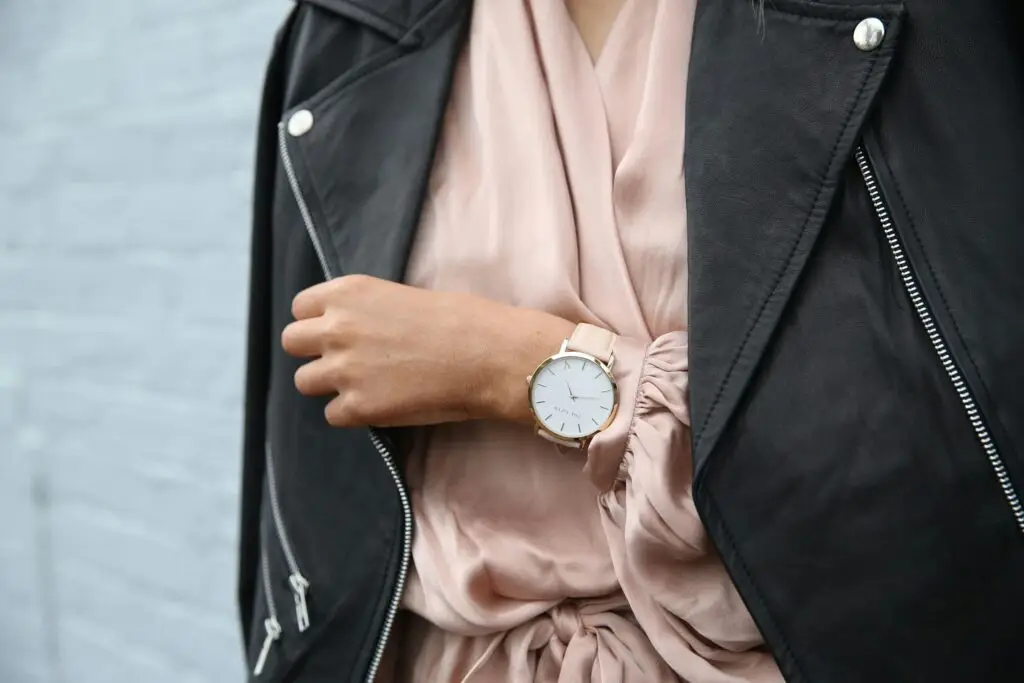
Casual vs. Smart-Casual Attire for Lodges
When it comes to dining or relaxing at safari lodges in the evening, dress codes can vary. Most lodges operate with a casual or smart-casual vibe, so it’s important to strike the right balance between comfort and style.
- Casual Attire: For most lodges, casual clothing is perfectly acceptable for dinner or relaxing. Think lightweight shirts or t-shirts paired with comfortable pants or shorts. If you’re enjoying a relaxed evening by the pool or lounge, comfortable, breathable fabrics will help you unwind.
- Smart-Casual Attire: Some lodges, especially upscale ones, may have a slightly more formal dress code for evening meals. In these cases, opt for smart-casual attire, such as a collared shirt, khaki pants, or a smart pair of shorts. A neat look will fit in perfectly while still keeping you cool and comfortable.
- Footwear: Comfortable sandals or closed shoes are ideal for evenings, but if your lodge leans toward the smart-casual side, you might want to opt for a slightly more polished look, such as casual loafers or closed-toe shoes.
Warm Jackets, Scarves, and Socks for Chilly Nights
As the evening progresses, temperatures can dip further, and you might need a little extra warmth:
- Warm Jackets: For those colder evenings, pack a warm, lightweight jacket or sweater that you can wear over your layers. A fleece or insulated jacket works well if you plan on sitting outdoors to watch the stars or enjoy the cool air.
- Scarves: If you’re planning to be outside in the evening for an extended period, such as on a night game drive, a scarf can be a great addition to your outfit. It not only keeps you warm but also adds an extra layer of protection against the elements.
- Socks: If you’re in a cooler area, don’t forget to pack some cozy socks. They’ll keep your feet warm during the chilly nights and are great if you’re lounging around the lodge or heading to dinner.
Evening Wear – Comfort and Protection
While comfort is essential, there are also practical reasons to think about the colors and types of clothing to wear in the evening:
- Opt for Light-Colored Clothing: As dusk falls, mosquitoes tend to become more active. Wearing light-colored clothing, especially light khakis, linen trousers, or cotton shirts, is advisable. These colors not only keep you cool in the warm temperatures but also make it less likely that mosquitoes will be attracted to you. Dark colors, on the other hand, tend to attract more insects.
- Linen and Cotton for Comfort: Linen trousers are a great evening option. They’re breathable, keeping you cool even if the temperatures are still warm, and they help protect your legs from pesky bites. Cotton shirts are another good option for their softness and breathability.
- Bug Protection: To avoid insect bites in the evenings, consider clothing treated with insect-repellent sprays. These products add an extra layer of protection, especially if you’re spending time outdoors, where mosquitoes and other insects are most active.
TIPS: By layering appropriately for the temperature, opting for the right level of formality, and choosing practical clothing that protects you from the elements, your safari evenings will be just as enjoyable as the daytime adventures. Whether you’re relaxing at the lodge, dining under the stars, or stargazing outdoors, these clothing tips will help you stay comfortable and prepared for any safari evening.
Practicality of Safari Clothing Essentials
When you’re heading out on safari, comfort and functionality are key. Here are some practical clothing tips to make your experience smoother:
- Select Clothing with Pockets: Safari adventures often require carrying essentials like your camera, sunscreen, or binoculars. Combat trousers with multiple pockets are a great option because they allow you to keep these items within easy reach without having to dig through a bag. You’ll appreciate the convenience when you spot wildlife and need to grab your gear quickly.
- Bring a Light Jacket or Fleece: Even if the day is warm, mornings and evenings can be cooler, especially in more elevated or desert areas. A light jacket or fleece is perfect for these moments. Plus, fleece dries quickly if it gets wet, which is essential during unpredictable weather or light rain. It’s all about staying prepared for changes in temperature and ensuring you’re comfortable throughout the day.
- Choose Comfortable Footwear: Walking around on a safari involves both light walking and frequent getting in and out of vehicles. That’s why comfortable, sturdy footwear is a must. Choose shoes like sturdy trainers or walking shoes that are designed for long periods of wear. They’ll give you support for walking and keep your feet comfortable as you explore the safari terrain.
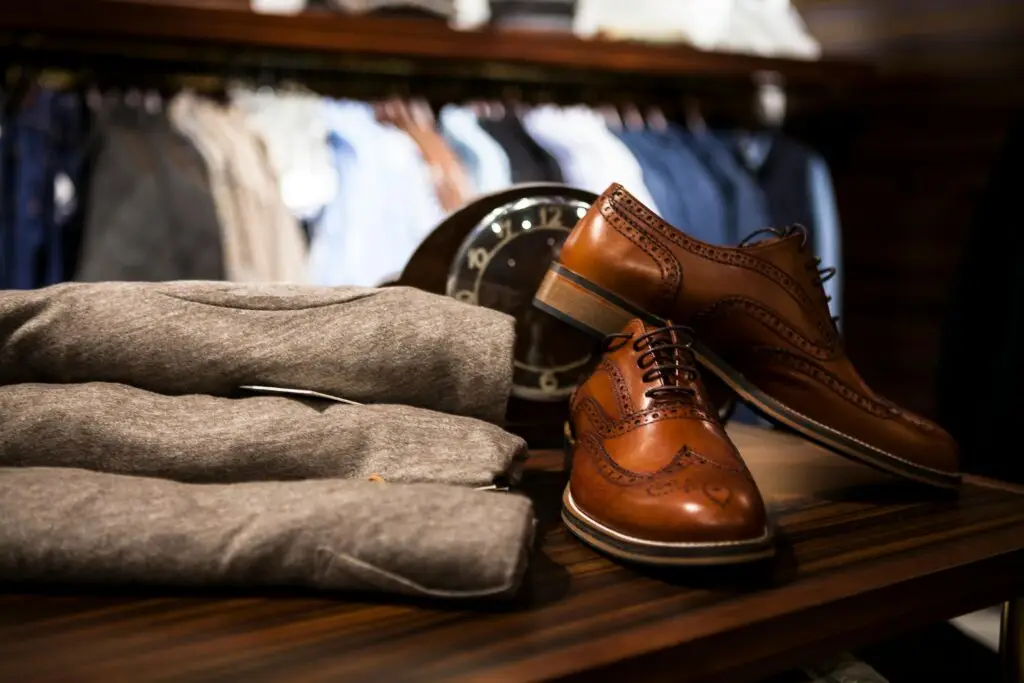
Best Shoes to Wear on Safari
Your choice of footwear can significantly impact your safari experience. The right shoes will keep your feet protected and comfortable, whether you’re exploring by vehicle or walking through the bush. Let’s break it down:
Hiking Boots vs. Safari Shoes – When to Choose Each:
- Hiking Boots: If your safari includes more rigorous walks or treks in areas where you’ll be navigating uneven or rough terrain, hiking boots are your best choice. They offer ankle support, durability, and protection against thorns, rocks, and insects. They’re designed for more adventurous walks and will keep your feet safe on longer treks.
- Safari Shoes: If you’re planning a safari that includes more vehicle-based travel and light walking, safari shoes like comfortable sneakers or outdoor shoes are a great option. They’re lightweight and offer enough protection for short walks, yet still breathable enough for warmer weather.

Closed-toe vs. Open-toe Shoes – Protection Against Thorns, Insects, and Rough Terrain:
- Closed-toe Shoes: For maximum protection, always opt for closed-toe shoes. They’ll protect your feet from thorns, sharp rocks, and insects, which are common hazards in the bush. Closed-toe shoes are also ideal for safaris that involve a fair amount of walking, as they keep your feet safe from environmental hazards.
- Open-toe Shoes: While open-toe sandals or shoes are cooler for warm weather, they aren’t ideal for rough terrain or areas with lots of insects. They’re best for more relaxed moments, like when you’re staying at a lodge or enjoying a peaceful evening by the pool. If you do choose open-toe shoes, make sure they’re sturdy and provide some level of protection against insects or stray plant life.
Evening Footwear: After a long day on safari, comfort is key when relaxing at your lodge. Comfortable sandals or flip-flops are ideal for evening wear. They’re easy to slip on after a day of exploring and will help keep your feet cool. Just remember, if you plan to walk around in the evening, ensure your footwear is sturdy enough for a short stroll, but prioritize comfort above all.
TIPS: By choosing the right shoes for safari, you ensure that your feet stay protected and comfortable throughout the adventure, allowing you to focus more on enjoying the experience!
Packing Tips for Safari
Packing efficiently for a safari can make a huge difference in ensuring your comfort and convenience. Here are some essential packing tips:
- Pack Light: Safari trips usually offer laundry services, so you don’t need to overpack. By choosing versatile clothing, such as zip-off trousers or convertible clothing, you can save valuable space in your luggage. These items can easily be adjusted for different temperatures, and their multi-purpose nature means you won’t need to pack too many separate pieces. Keep your packing minimal but practical to make your safari experience hassle-free.
- Use Soft-Sided Bags: If you plan on traveling by light aircraft to your safari destination, soft-sided luggage is essential. These bags are easier to fit into smaller storage spaces on planes, as hard-shell bags may not fit due to limited capacity. Soft-sided bags are flexible, allowing for more efficient packing and ensuring your luggage can be stored easily without taking up unnecessary space.
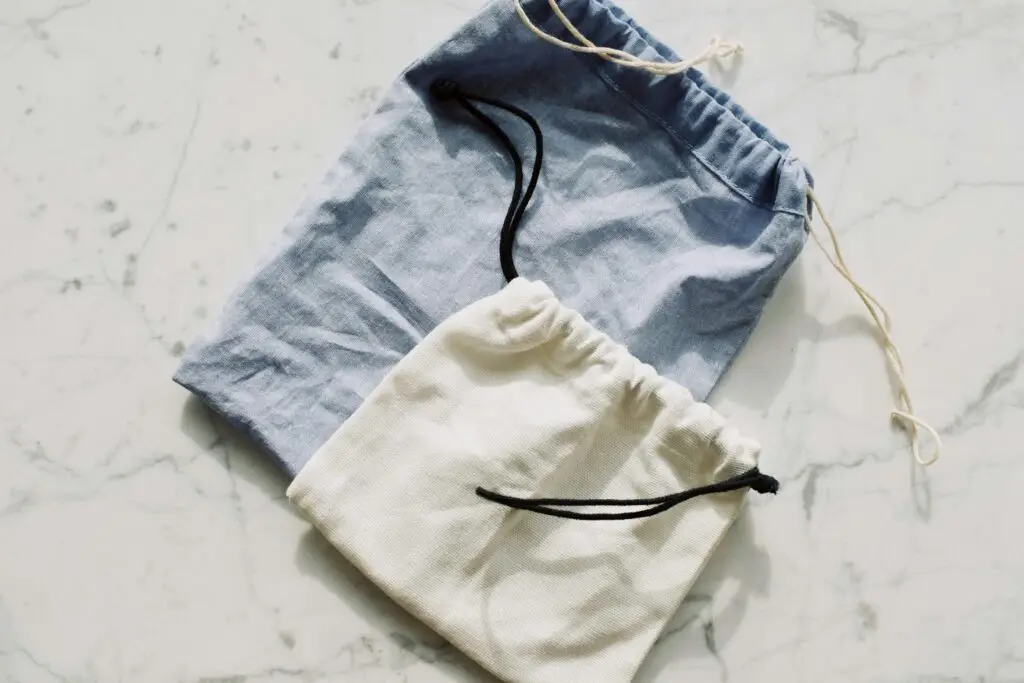
When planning your safari trip, it’s important to choose the right safari clothing that balances comfort, practicality, and protection. Whether you’re exploring the savanna during the day or relaxing in the evening, what to wear on safari should keep you comfortable and shield you from the elements and insects. Be sure to pack light, opt for versatile clothing, and consider the practicalities of soft-sided bags, especially if you’re traveling by air. With the right evening clothing and a bit of thoughtful packing, you’ll be ready to enjoy your safari in comfort and style, no matter what the day or evening brings.

